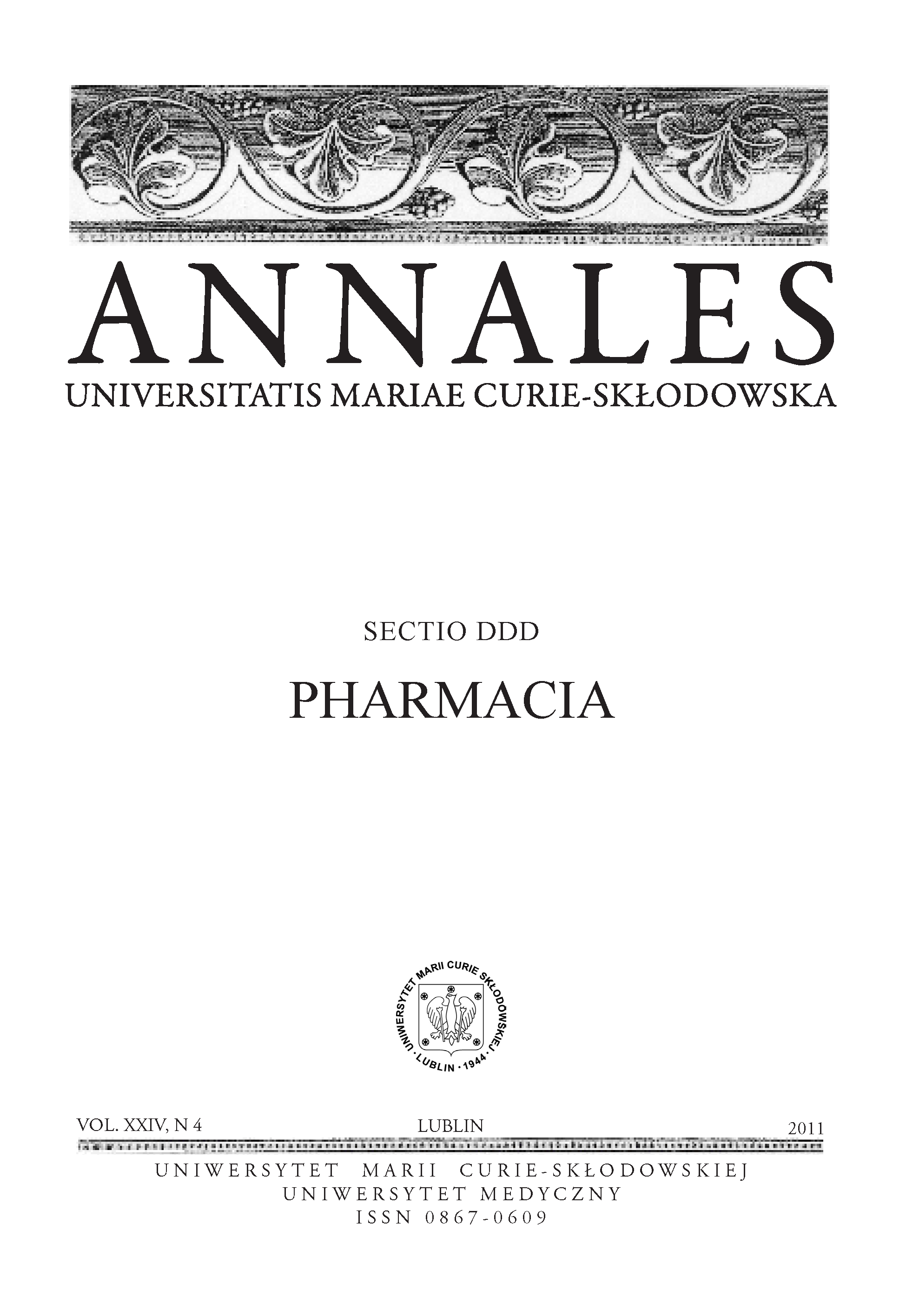Morfologia końcowego odcinka aorty brzusznej i kąta podaortowego w różnych okresach życia człowieka
DOI:
https://doi.org/10.12923/Słowa kluczowe:
subaortic angle, abdominal aorta, bifurcation aortaAbstrakt
The aim of the study was to evaluate morphology of the terminal part of the abdominal aorta in different periods of human life. Two hundred and twelve human bodies, aged from the 7 gestational months to 82 years, were examined. Transversal diameters of the abdominal aorta and subaortal angle were measured. In males the dimension of the terminal part of aorta – just over the origin of common iliac arteries – increased from 3.63 mm in 7th month of prenatal period to 21.56 mm in the 50-59 age group. The female values were lower and set as 3.0 and 21 mm, respectively. The dimension on the level of the bifurcation increased from 4.80 to 29.16 mm in males, and 4.35 to 27.03 mm in females. However, the subaortic angle was higher in females. It ranged from 58.5° in the age group 1-4 years to 93° in the old ones. In males, in corresponding periods of life, the angle reached 54.7 and 74.1°. In the group over 50, the common iliac arteries departed at a small angle and then they went sideward unilaterally or bilaterally. In the groups aged 50-59, 60-69 and older, such cases were found in 50, 60 and 50% - in males, and 10, 20 and 50% in females, respectively.
Bibliografia
1. Adachi B: Das Arteriensystem der Japaner. Kaiserlich – Japanischen Universität; Kioto 1928.
2. Al-Rafiah A et al.: Anatomical study of the carotid bifurcation and origin variations of the ascending pharyngeal and superior thyroid arteries. Folia Morphol. 70, 47, 2011.
3. Budhiraja V, Rastogi R: Variant origin of superior polar artery and unusual hilar branching pattern of renal artery with clinical correlation. Folia Morphol. 70, 24, 2011.
4. Dodevski A et al.: Basilar artery fenestration. Folia Morphol. 70, 80, 2011.
5. Esmer AF et al.: Neurovascular relationship between abducens nerve and anterior inferior cerebellar artery. Folia Morphol. 69, 201, 2010.
6. Gawlikowska-Sroka A et al.: Analysis of the influence of heart size and gender on coronary circulation type. Folia Morphol. 69, 35, 2010.
7. Jayanthi V et al.: Anomalous origin of the left vertebral artery from the arch of the aorta: review of the literature and a case report. Folia Morphol. 69, 258, 2010.
8. Jezyk D et al.: Positions of septal papillary muscles in human hearts. Folia Morphol. 69, 101, 2010.
9. Klepacki M et al.: The variability of diameter of common iliac artery in different periods of human's life. Ann UMCS, Sect. DDD 62, 67, 2007.
10. Laughlin GA et al.: Abdominal aortic diameter and vascular atherosclerosis the Multi-Ethnic Study of Atherosclerosis. Eur J Vasc Endovasc Surg. 41, 481, 2011.
11. Luzsa G.: X-ray anatomy of the vascular system. Akademiai Kiado Budapest 1974.
12. Mendez TR: Variaciones Anatomicas de la Bifurcacion Aortica Med-ULA. 2, 48, 1988.
13. Nowak D et al.: The relationship between the dimensions of the right coronary artery and the type of coronary vasculature in human foetuses. Folia Morphol. 70, 13, 2011.
14. OuYang H, Ding Z: Research of thoracolumbar spine lateral vascular anatomy and imaging. Folia Morphol. 69, 128, 2010.
15. Pearce WH et al.: Aortic diameter as a function of age, gender, and body surface area. Surgery. 114, 691, 1993.
16. Pennington N, Soames RW: The anterior visceral branches of the abdominal aorta and their relationship to the renal arteries. Surg. Radiol. Anat., 27, 395, 2005.
17. Shah R: Geometric anatomy of the aortic- common iliac bifurcation. J. Anat. 126, 451, 1978.
18. Shakeri AB et al.: Aortic bifurcation angle as an independent risk factor for aortoiliac occlusive disease. Folia Morphol. 66, 181, 2007.
19. Steinberg CR et al.: Measurement of the abdominal aorta after intravenous aortography in health and arteriosclerotic peripheral vascular disease. Am. J. Roentgenol. 95, 703, 1965.
20. Szmigielski W: Analiza angiometryczna niektórych cech morfologicznych aorty brzusznej i tętnic biodrowych wspólnych w nadciśnieniu tętniczym krwi. Kardiol. Pol. 31, 585, 1978.
21. Testut L, Latarjet A: Traite d’anatomie humaine. (9th ed.) Doin Cie, Paris. 1948.
22. Wiliams P et al.: Gray’s anatomy. Churchill Livingstone Edinburg. 1989.
23. Yahel J, Arensburg B: The topographic relationships of the unpaired visceral branches of the aorta. Clin. Anat. 11, 304, 1998.
Pobrania
Opublikowane
Numer
Dział
Licencja
Prawa autorskie (c) 2011 Autorzy

Praca jest udostępniana na licencji Creative Commons Attribution-NonCommercial-NoDerivatives 3.0 Unported License.


